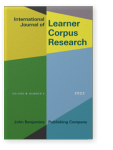Vol. 8:2 (2022) ► pp.190–236
Integrating fluency and prosody into multidimensional analysis
Exploring the multidimensional nature of spoken learner language
Investigation of the characteristics of spoken learner language has increased in recent years but has been primarily limited to the investigation of one linguistic level (e.g., lexico-grammar), which gives a limited picture of learners’ overall linguistic competence (e.g., Skarnitzl & Rumlová, 2019). In this study, we investigate lexico-grammar, fluency, and prosody in LINDSEI (German, Czech, and Spanish) alongside British and American English comparable corpora, using multidimensional analysis, a statistical procedure that identifies co-occurring linguistic features and leads to functional interpretation of the discourse. Results show significant differences between L1 and L2 groups on four of six dimensions and reveal novel patterns of co-occurrence. Dimension 1, for example, identifies correlates of informationally driven discourse on all three linguistic levels under investigation. These findings show the importance of including multiple linguistic levels in the analysis of learner discourse and have implications for a more holistic and functionally based approach to language instruction.
Article outline
- 1.Introduction
- 2.Literature review
- 2.1Previous learner corpus research on lexico-grammar, fluency, or prosody
- 2.2Relationships among linguistic levels in L2 speech
- 3.Methods
- 3.1Corpora
- 3.2Multidimensional Analysis
- 3.3Functional interpretation
- 3.4Investigation of the dimensions across language background
- 4.Results
- 4.1Overview
- 4.2Dimension 1
- 4.3Dimension 3
- 4.4Dimension 4
- 4.5Dimension 5
- 5.Discussion
- 6.Limitations
- 7.Conclusion
- Notes
-
References
